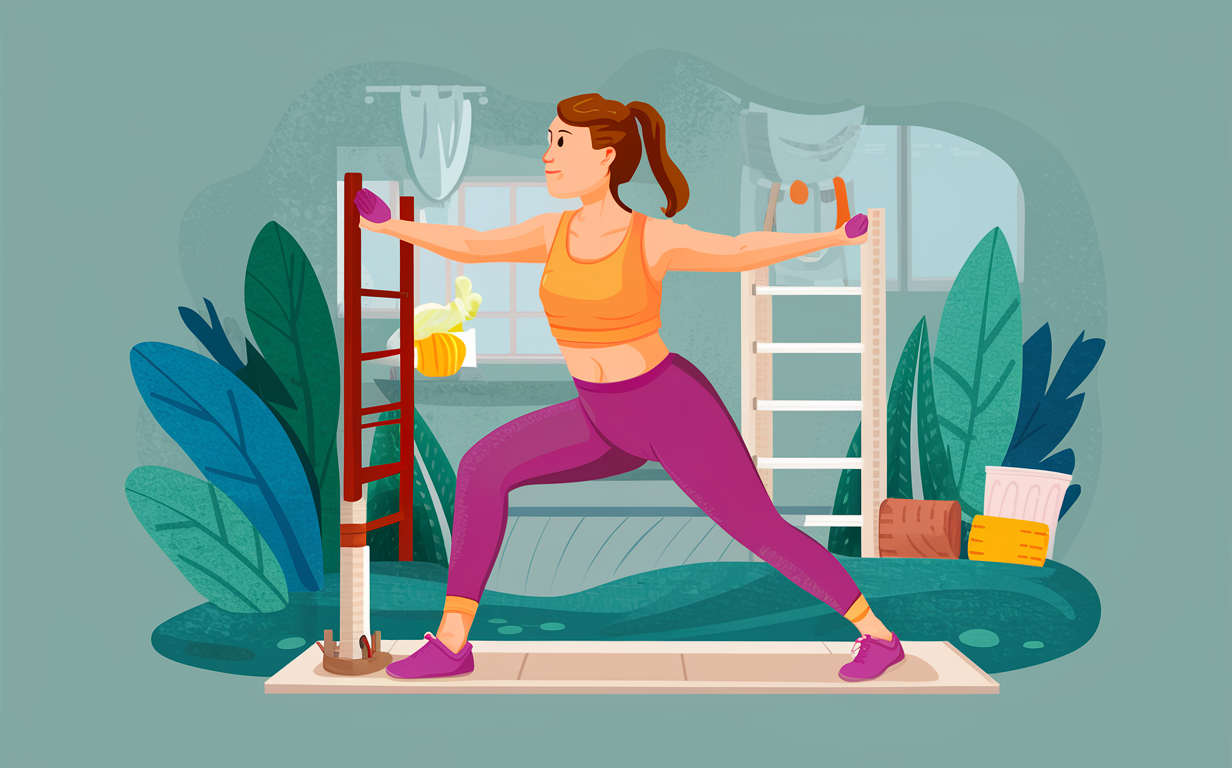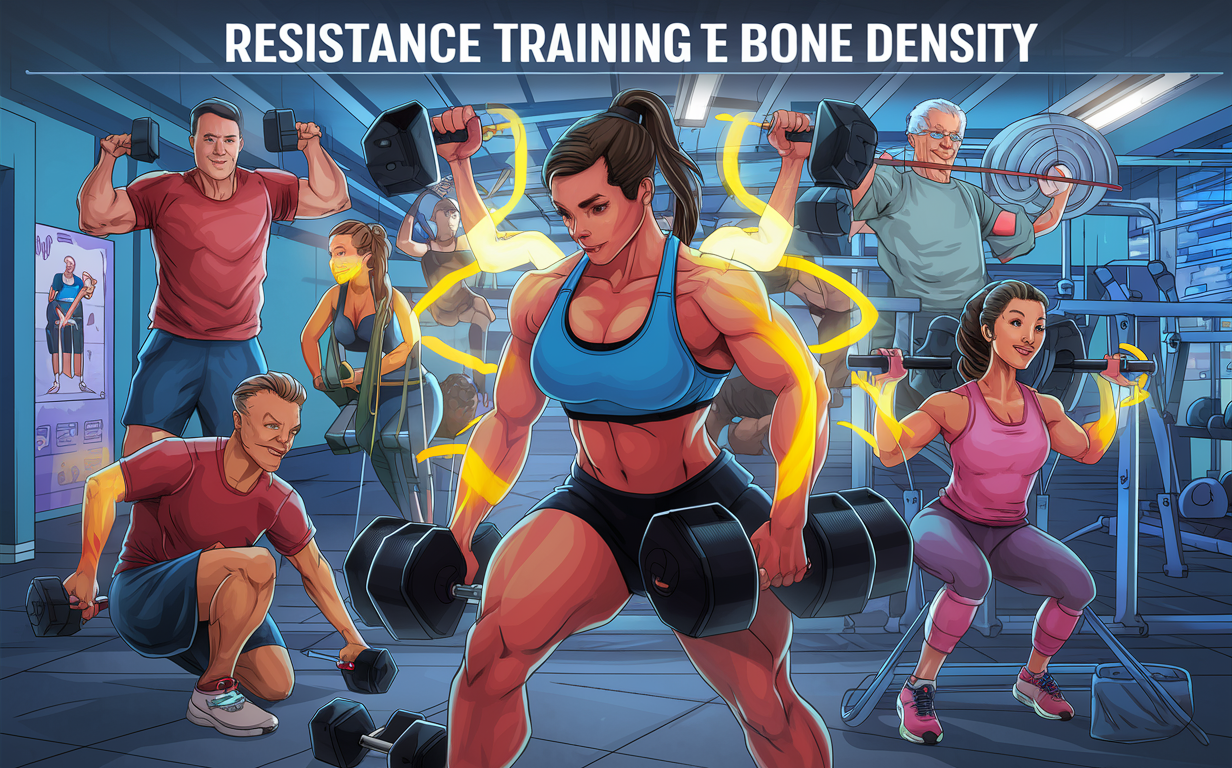
Engaging in regular physical activity is crucial for maintaining strong and healthy bones throughout your life. Fitness plays a vital role in preventing bone loss, reducing the risk of fractures, and promoting overall bone health. In this article, we’ll explore the various ways you can incorporate fitness into your lifestyle to support your bone health and keep your skeleton strong and resilient.

Bones are living tissues that constantly undergo a process called remodeling, where old bone is broken down and replaced with new bone. Exercise plays a crucial role in this process by stimulating the formation of new bone and increasing bone density. When you engage in physical activity, particularly weight-bearing exercises, the force exerted on your bones stimulates them to become stronger and denser.
Regular exercise not only helps build and maintain strong bones but also improves balance, coordination, and muscle strength, all of which can help prevent falls and reduce the risk of fractures. Additionally, exercise has been shown to improve overall health, boost mood, and enhance quality of life, making it an essential component of a healthy lifestyle.

Weight-bearing exercises are activities that force you to work against gravity, putting stress on your bones and stimulating bone formation. Some examples of weight-bearing exercises include:
Aim to incorporate at least 30 minutes of weight-bearing exercise into your routine most days of the week. If you’re new to exercise, start with low-impact activities like walking and gradually increase the intensity and duration as your fitness level improves.

Resistance training, also known as strength training, involves using weights, resistance bands, or your own body weight to create resistance against your muscles. This type of exercise not only strengthens your muscles but also puts stress on your bones, stimulating bone formation and increasing bone density.
Some examples of resistance training exercises include:
Aim to incorporate resistance training into your routine at least two to three times per week, targeting all major muscle groups. Start with light weights or resistance and gradually increase the load as your strength improves.
While weight-bearing and resistance exercises are the most effective for building and maintaining bone density, cardiovascular exercise is still important for overall health and can provide indirect benefits for your bones. Cardiovascular exercise, also known as aerobic exercise, includes activities that increase your heart rate and breathing rate, such as:
Aim to incorporate at least 150 minutes of moderate-intensity cardiovascular exercise or 75 minutes of vigorous-intensity exercise per week, spread throughout the week.

Flexibility and balance training are important components of a well-rounded fitness routine and can help reduce the risk of falls and fractures. Stretching exercises can help maintain joint flexibility and range of motion, while balance exercises can improve stability and reduce the risk of falls.
Some examples of flexibility and balance exercises include:
Incorporate flexibility and balance exercises into your routine at least two to three times per week, holding each stretch for 15-30 seconds and performing balance exercises for 30-60 seconds on each leg.

To optimize bone health and overall health, it’s important to create a balanced fitness routine that incorporates a variety of exercises. A well-rounded routine should include:
Remember to start slowly and gradually increase the intensity and duration of your workouts as your fitness level improves. It’s also important to listen to your body and avoid overexertion, which can lead to injury.
| Type of Exercise | Frequency | Duration |
|---|---|---|
| Weight-bearing | Most days of the week | 30 minutes |
| Resistance training | 2-3 times per week | 30-60 minutes |
| Cardiovascular | 5 times per week | 30 minutes (moderate-intensity) or 25 minutes (vigorous-intensity) |
| Flexibility and balance | 2-3 times per week | 10-15 minutes |

In addition to exercise, nutrition plays a crucial role in maintaining strong and healthy bones. Some key nutrients for bone health include:
Aim to incorporate a variety of nutrient-dense foods into your diet to support bone health and overall health. If you have specific dietary concerns or restrictions, consult with a registered dietitian for personalized recommendations.

If you have been diagnosed with osteoporosis or are at high risk for the condition, it’s important to take certain precautions when exercising to avoid fractures or other injuries. Some tips for exercising safely with osteoporosis include:

When it comes to fitness for bone health, consistency is key. While any amount of exercise is better than none, the most significant benefits come from making exercise a regular part of your lifestyle. Aim to incorporate a variety of exercises into your routine and find activities that you enjoy to help you stay motivated and consistent.
It’s also important to remember that it’s never too late to start exercising for bone health. While starting early and maintaining a lifelong habit is ideal, research has shown that even older adults can benefit from starting an exercise program and experience improvements in bone density and overall health.
Fitness plays a vital role in maintaining strong and healthy bones throughout your life. By incorporating a variety of weight-bearing exercises, resistance training, cardiovascular exercise, and flexibility and balance training into your routine, you can support bone health, reduce the risk of fractures, and improve overall health and quality of life.
Remember to start slowly, gradually increase the intensity and duration of your workouts, and listen to your body to avoid overexertion or injury. If you have specific health concerns or are at high risk for osteoporosis, consult with your healthcare provider or a certified fitness professional for personalized recommendations.
By making fitness a regular part of your lifestyle and combining it with a nutrient-dense diet, you can take proactive steps to support your bone health and enjoy a strong, healthy skeleton for years to come.
